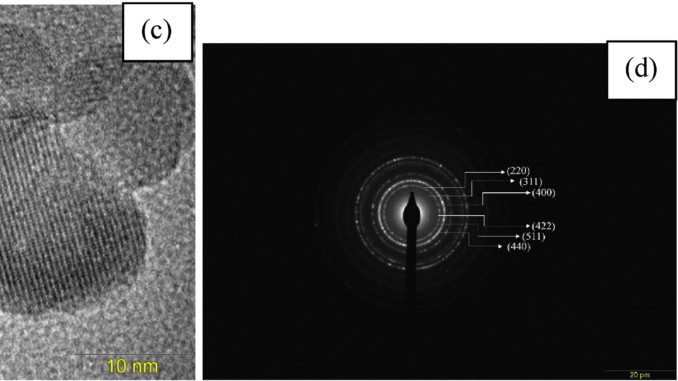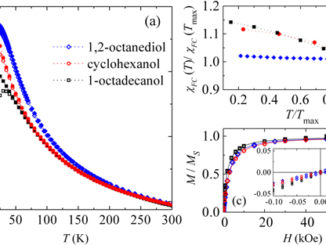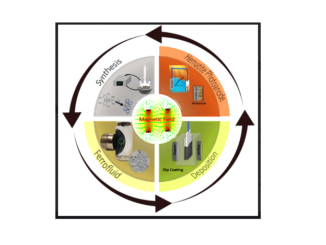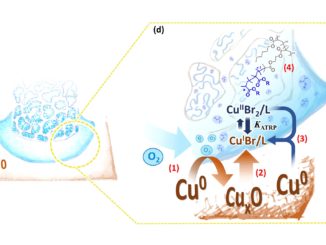
EDTA-functionalized Fe3O4 nanoparticles
Abstract: This study analyzes the synthesis and characterization of functionalized Fe3O4 nanoparticles by ethylenediaminetetraacetic acid (EDTA). The syntheses were performed using the co-precipitation method under different experimental conditions: nitrogen atmosphere versus ambient atmospheric conditions, and temperatures of 25 degrees C versus 90 degrees C. X-ray diffraction techniques, Fourier transform infrared (FTIR) spectroscopy, zeta potential, and transmission electron microscopy (TEM) were used to characterize these nanoparticles. The co-precipitation method produced high homogeneity in nanostructure shape and size. The functionalization of the magnetite surface was confirmed by the analyses and the development of new bands associated with EDTA as well as by zeta potential change. The addition of EDTA was also found to change the mechanism of nucleation and nanostructure growth; EDTA was found to favor nucleation, thus decreasing nanoparticle size.
Authors: A. G. Magdalena, I. M. B. Silva, R. F. C. Marques, A. R. F. Pipi, P. N. Lisboa-Filho, M. Jafelicci Jr.
Journal of Physics and Chemistry of Solids
Volume 113, February 2018, Pages 5-10
DOI: https://doi.org/10.1016/j.jpcs.2017.10.002




